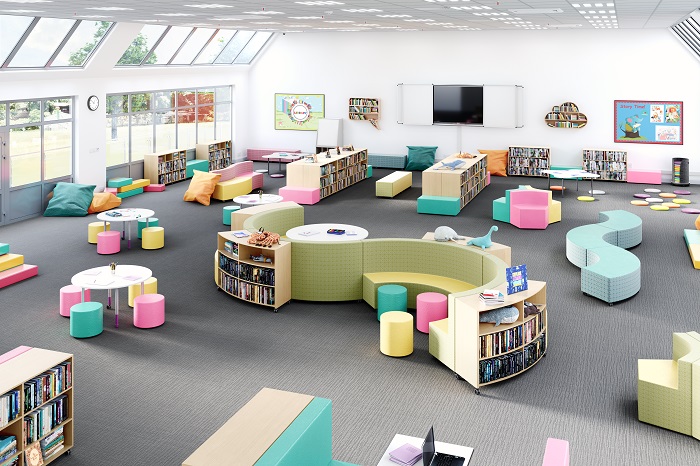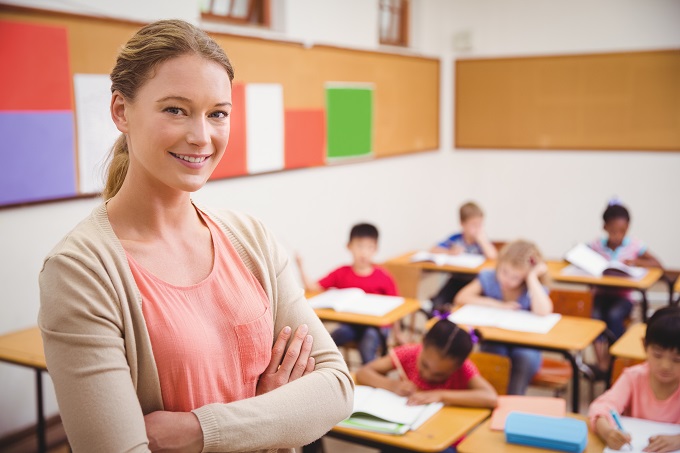Free the furniture! Flexible learning design for 2022
Education trends have a knack for getting ahead of the curve, and flexible furniture design is no exception.

Flexibility has driven pandemic survival over the last two years and given this, school staff and students are now retuning to the classroom with heightened awareness of what environment they need to help them teach and learn effectively.
Read the full article in our latest print issue, here.
Flexible furniture design has never been more relevant, so this term we sought out emerging trends and caught up with some leading flexible furniture suppliers to solidify purchasing tips for Australian schools.
Ergonomics rule: shake up student seating
Mixed seating options are increasingly essential in every classroom: soft and hard chairs, as well as high and low options for different learning activities. Learner agency drives this trend, encouraging students to choose a seat they feel will best enable them to complete the task at hand.

Relating to this emphasis on student agency, analysis on ‘Children’s behaviour and the design of school furniture’ from ergonomic researchers Grenville Knight and Jan Noyes in Ergonomics journal found that: “In the absence of radically redesigned furniture, it is suggested that children should be given more choice in their seating, and better guidance should be given to individuals involved in education in order to inform their decision-making about classroom furniture and the postural, anthropometric and orthopaedic aspects of sitting and related activities.”
Active seating continues this flexible seating trend by encouraging students to make use of a much wider variety of seating options. Seen particularly in Europe, these options can stretch as far as classroom exercise bikes, and seek to benefit physical health as well as focus. Stand-up desks are another seating option that continue to grow in popularity—more specifically, desks that can be lowered and raised from sitting to standing. These provide lots of versatility for older students in particular who may be moving from group work to individual study and for longer periods at a time. They can work well for staff—particularly school administrators and management teams who spend much of their day seated.

At their core, these flexible options ask students to be more aware of their own needs as learners and as people. For instance, if a child recognises that they are feeling overwhelmed, they can decompress on a fitness ball, or sit with a book on a beanbag; if they are overstimulated, they may find it easier to focus while seated on a wobble stool, bicycle-style pedal chair, or in a quiet booth.
When consulting with a furniture supplier, ask about ergonomic fundamentals and whether their products have been designed with this in mind.
Move stuff more: why schools are ‘hot desking’
Collaborative learning activities and hybrid classrooms, which combine in-person teaching with technology, are rapidly on the rise. Hot desking encourages collaboration by opening up the floor—instead of being assigned an individual desk for the year, learners move around as required (and so does the furniture).
Colourful configurations abound, ottomans, beanbags, modular tables, booths, and cubby-style hubs are all commonplace in schools that are actively hot desking. Rather than designate one teacher to a small classroom, this approach favours larger open-plan environment where multiple teachers might co-facilitate a variety of different projects. Visual appeal is significant here as colour coded furniture and carpet design is often used to ‘zone’ different areas rather than enforce hard borders between learners.
What schools want is tips to help them create extra learning areas, according to Sebel Furniture’s Stephanie Cox.

She told us: “They are allocating any space around the site they can; looking for any that are currently under-utilised and trying to convert them into learning environments. Unused office rooms are being reinvented to cater to small working groups. Hallway areas between classrooms are also being redesigned as breakout areas, and I believe this is directly linked to COVID as it provides more space between students to work without being cramped together in one classroom.
“Flexible learning spaces offer useful solutions here. Often, I design a classroom where students can collaborate in groups of different sizes, then the furniture can be moved for individual study when required. The key is to design the area so there is room to move–don’t overcrowd the area and consider storage if the classes have a lot of resources to house. Another tip is to not to over stimulate students with classroom colour, especially if student art will be displayed. Use colour intelligently—for example, science labs are often quite clinical in appearance, so this is one area where the stools could be brightly coloured.
A “hybrid approach” to flexible learning is the latest design trend Resource Furniture’s Creative Manager Michael Merlino has noticed.

He reveals: “We are now seeing perimeter classroom spaces with more functional furniture and softer, more natural tones.” Another growing trend is “a central collaborative space with a range of modular breakout furniture, such as soft seating with pops of colour”. Michael notes: “The more ‘conventional’ classroom furniture includes rectangular tables, but these are often now mobile, flip tables that provide versatility, coupled with lightweight sled base chairs and high stacking capacity. The central collaborative space provides a choice of learning with surfaces at varying heights, modular soft seating, and study pods for focus work.”
“My top tip is for schools to consider how their teachers and students want to use each space. Ask for their opinions, get their feedback, and involve them in the process. They will love the opportunity to be included and feel a stronger connection to the space. Most importantly, keep it simple but clever: you can have a great, ‘less is more’ design with careful consideration of the practicalities involved.”







